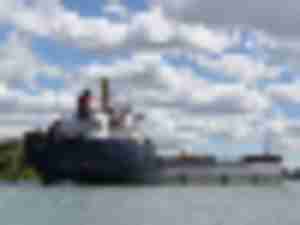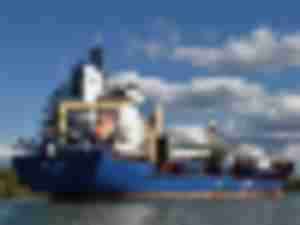
Wind cargo growing at US Great Lakes ports
Wind power keying project cargo moves ports on the US Great Lakes.

Port of Montreal re-opens after legislation forces striking dockers back to work
Operations began gradually returning to normal Saturday at the Port of Montreal after the Canadian federal government rushed through legislation late Friday forcing some 1,150 striking dockers back to work.

Montreal dockers launch strike ahead of possible government intervention
More than 1,100 Montreal dockers today began an unlimited strike that shut down almost all operations at Canada’s second largest port engulfed in one of the longest labour conflicts in its history.

Canadian West Coast ports weathering pandemic challenges
Despite the unprecedented global challenges of COVID-19, the leading ports on Canada’s West Coast are still enjoying robust trade with Asia. Vancouver and Prince Rupert even broke cargo records in 2020, with container trends continuing to show strength in 2021. And the Port of Nanaimo, in partnership with DP World, is expanding a major regional, shortsea project with a container-on-barge service.

Halifax-Great Lakes container service slated for May
In a development worth watching, newly created Doornekamp Lines has announced the launching in May of a bi-weekly Canadian-flag container service via the St. Lawrence Seaway between Halifax and Picton, a small growing port on Lake Ontario.

St. Lawrence River two-container port concept under threat?
While the Port of Montreal has successfully navigated through the demanding regulatory process paving the way to begin construction this year of a new container terminal, the same cannot be said for the Port of Quebec in its ambitious goal to become a second container port on the St. Lawrence River.

Breaking shortsea ground on Seaway
Desgagnés Group carries out container shipment to Great Lakes

Seaway heading for total cargo decline despite grain surge
The St. Lawrence Seaway, which links North America’s industrial heartland to the Atlantic Ocean, has not failed to be impacted by the ongoing global pandemic. Current Seaway cargo flows through Canadian and U.S. Great Lakes ports served by the waterway’s locks are experiencing a downward pattern in the high single digits, but sharp gains in grain shipments and a solid trend in wind-related project cargo are demonstrating the system’s resiliency and vital trade role.

Project cargoes surge on Seaway
COVID-19 may be negatively impacting overall global shipping – but the binational St. Lawrence Seaway is on track for one of its best years in history for project cargoes, due notably to a sharp increase in wind energy components moving through the system that connects the Atlantic Ocean to North America’s industrial hinterland.

Massive LNG Canada project generating breakbulk loads
In British Columbia, Kitimat’s $40 billion LNG export terminal is one of Canada’s largest projects – the largest energy undertaking in Canadian history. It’s estimated it will eventually generate over a million tons of breakbulk and project freight. So, where is all that freight coming from?
- 3
- 4
- 5(current)
- 6
- 7
© Copyright 1999–2024 American Journal of Transportation. All Rights Reserved
